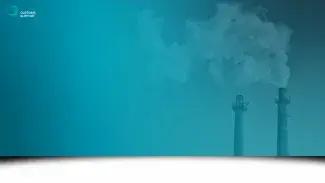Why the legislation is necessary
Ozone-depleting gasses are those which chemically react to ozone, removing it from the air. Ozone is a natural compound found in the stratosphere which protects the surface of the Earth from ultraviolet radiation – which is harmful to both humans and the general environment.
Since 1986, there have been efforts around the globe to identify and reduce the number of ozone-depleting substances in use. Provided that these products can be removed from consumption, it is expected that the ozone layer will recover in time due to its natural creation cycle.
According to the UN Environment Programme (UNEP), this will take until approximately 2066 in the Antarctic – where the greatest damage is.
Fluorinated gases do not harm the ozone layer, and were originally believed to be a solution to chloro-fluorinated gases – chlorofluorocarbons “CFCs” and hydrochlorofluorocarbons (HCFCs) – when these were discovered to be ozone-depleting.
However, fluorinated gases have since been found to have high Global Warming Potential (GWP). In fact, fluorinated gases have more than 23,000 times the amount of GWP for the same quantity of carbon dioxide. Therefore, it is critical these substances are also removed from use.
The new legislation and how it affects you
The European Council adopted two regulations surrounding ozone-depleting substances and fluorinated gases in January 2024, which came into effect on the 11th of March 2024.
For ozone-depleting substances (ODSs)
The new regulations ban ozone-depleting substances for use, with very few exceptions. One such exemption is the use of ODSs in feedstock – where the product is used to create another which is not banned. Other uses include processing agents in labs or as fire-prevention in special applications.
In addition to preventing the production and consumption of ODSs, the legislation highlights the requirement for recovering those already in circulation for correct destruction or recycling.
If you complete an import clearance on non-EU goods, then you need to ensure that you meet the obligations set out in the new regulations:
- Check if your product is banned or whether it has an exceptional use.
- Obtain a customs licence for trading your ODS.
- Check the renewal timeframes on your licences and ensure that you schedule in reviews and reapplications in good time.
- Review the disposal guidelines for your product to ensure that you do not release ODSs into the atmosphere, which can result in penalties and the revocation of your licence.
For fluorinated gases
The new legislation aims to reduce both the production and consumption of hydrofluorocarbons (HFCs) over time. The use of HFCs is to be eliminated by 2050, and the current target for production is to reduce this to 15% by 2036.
This will be achieved with a degressive quota allocation, as well as a full ban for several product and equipment categories where there are already economically viable alternatives to fluorinated gases.
Fluorinated gases are often used in refrigeration, heat pumps, and air conditioning, so the new legislation sets our specific dates for when these need to be phased out in certain categories:
- 2032: small monoblock heat pumps and air conditioning units (<12kW)
- 2030: medium-voltage switchgears (≤52kW)
- 2032: high voltage switchgears (>52kW)
- 2035: split air conditioning and heat pumps*
*Earlier deadlines are in place for certain type of split systems which have higher Global Warming Potential.
The European Commission will review the impact and effect of the regulation no later than January 2030. The viability of a complete phase out of HFCs by 2050 will also be determined by 2040. This will depend on technological advancements in alternative compounds and the observation of the effects of the same on the environment.
If you complete an import clearance on non-EU goods, then you need to ensure that you meet the obligations set out in the new regulations:
F-gases as bulk
- Register your company on the F-gas register and get authorisation to use a quota.
- Ensure that you cover the import with enough quota before arrival.
- Comply with F-gas labelling requirements.
- If your product contains R32, R404A, R407, or any mixture containing them, you must obtain a certificate of conformity and traceability documentation to show your HFC-23 byproduct was properly treated. This documentation must be presented during clearance.
- You must submit an annual report to the F-gas register by the 31st of March of each year.
- If your import quantity exceeds 10,000 tonnes CO2-equivalent units, then you must contract an independent auditor to generate a verification report confirming that your reported amount is correct. This must also be uploaded to the F-register by the 30th of June of each year.
F-gas-consuming equipment
- Register your company on the F-gas register and get authorisation to use a quota.
- Obtain a declaration of conformity for each product. Keep this for at least five years.
- Comply with F-gas labelling requirements.
- If your product concerns R32, R404A, R407, or any mixture containing them, you must obtain a certificate of conformity and traceability documentation to show your HFC-23 byproduct was properly treated. This documentation must be presented during clearance.
- A verification report must be submitted by an independent contractor by 31st March each year, confirming that your declarations of conformity are accurate.
- You must submit an annual report to the F-gas register by the 31st of March of each year if the imports emissions are more than 500 tonnes CO2-equivalent units. If the import does not reach the threshold, then this information is registered with the verification report.
Need advice on environmental products and customs?
Customs Support is here for you. Strategically located in more than 100 locations across Europe, we can help you with customs and environmental regulations throughout the EU. Contact us for more information.














